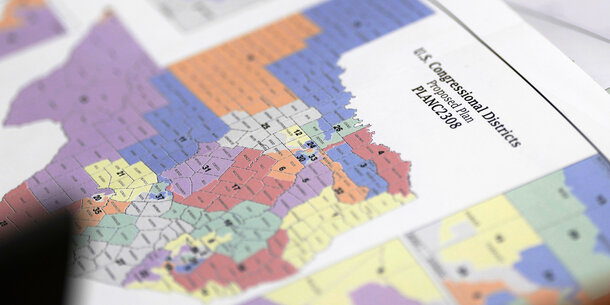Over the past few months, the Census Bureau has been publishing the results of its major quality check on the 2020 Census. While the bureau’s initial findings from the Post-Enumeration Survey suggest that the census very accurately counted the total number of people living in the country, they also show that this decade’s data suffered from the same serious problem as past censuses: significant undercounts in many communities of color. The bureau’s subsequent findings, moreover, reveal that not all states were counted equally well.
These data problems complicate the census’s ability to perform its basic functions and should spur action for future fixes.
What is the Post-Enumeration Survey?
The Post-Enumeration Survey is a sample survey the bureau conducts shortly after the decennial census. Its goal is to measure how well the Census Bureau counted people and captured basic demographic information, specifically the age, sex, race, and ethnicity of each person in the country. This data is used to produce two estimates that help evaluate the count’s accuracy. The first is how many people were undercounted or overcounted in the census, known as “net coverage error.” The second is how many people were correctly counted, erroneously counted, or missed altogether, known as “components of coverage.” This data gives the public a sense of how accurate the 2020 Census ultimately was compared to prior censuses, and it gives the bureau a sense of what it needs to improve before the next one.
Why is it important to have an accurate census?
The stakes of the census are high. Decennial census data is used to divide seats in the House of Representatives and Electoral College votes among the states. It is also used to redraw district maps used for voting and to distribute over $1 trillion in funding every year for services like food, schools, and healthcare. Getting the count right is essential to ensuring that everyone receives their fair share of democratic representation and government support.
The stakes of this decade’s census are especially high for communities of color. The nation’s population growth over the past 10 years came entirely from nonwhite communities. For these communities to receive political representation and critical investments commensurate with their size, they must be counted fully.
Inaccuracies in census data that fall along racial lines, in turn, perpetuate systemic discrimination against and disenfranchisement of communities of color by depriving those groups of political power and public services.
What are the major takeaways from the Post-Enumeration Survey?
The pandemic and unprecedented meddling by the Trump administration led to worries about a disastrous 2020 count. The Post-Enumeration Survey results indicate that the national population count was unaffected by these challenges — the 2020 Census did not have a statistically significant undercount rate overall. However, that national statistic hides the more alarming trend of racially inequitable undercounts, an issue the census has consistently faced. The top-level results also mask disparities in the count’s accuracy among the states.
The Post-Enumeration Survey shows that in 2020, people who identify as Black, Hispanic/Latino, Native American and Alaskan Natives living on reservations, or Some Other Race were significantly undercounted, while white non-Hispanic and Asian people were overcounted, and Native Hawaiian and Pacific Islander people were neither overcounted nor undercounted. The Hispanic population, moreover, went undercounted at over three times the rate it was in 2010.
Meanwhile, six states were undercounted at a statistically significant rate in 2020: Arkansas, Tennessee, Mississippi, Florida, Illinois, and Texas. Eight states, on the other hand, were overcounted: Ohio, Massachusetts, Utah, New York, Minnesota, Rhode Island, Delaware, and Hawaii.
The Census Bureau states that the overcounts and undercounts in the 2020 Census were not outside the range of expected variability based on prior decades. The 2010 PES suggested that no states had statistically significant undercounts or overcounts, while the 2000 PES estimated 22 states and D.C. had statistically significant problems of that kind. The Bureau cautions, however, that uncertainties associated with the methods it used in those earlier quality checks make it difficult to make historical comparisons of these quality statistics.
What should be done to improve future censuses?
Planning for the 2030 Census is already underway, and the results of the Post-Enumeration Survey show that the bureau needs to prioritize reducing racial and ethnic differential undercounts the next time around. The bureau should take a hard look at its current counting practices and research how it can improve all levels of the census process to ensure fairer counts. Internet responses, for example, helped insulate the 2020 count from the COVID-19 pandemic’s disruptive effects, but the digital divide — that is, unequal access to broadband services across racial and ethnic groups — means that moving the census to the internet can’t ensure an accurate count. Congress should fully fund bureau efforts to study and improve its counting methodologies, as well as consider reforms that would safeguard the bureau’s independence and enhance the accuracy, inclusivity, and equity of the count. Lawmakers should also consider changing the formulas used to distribute federal funding to compensate state and local governments for undercounts in their jurisdictions.
The difference in state-level accuracy also suggests that robust get-out-the-count efforts led by states, localities, and civil society groups may enhance the quality of the count. States that invested in census operations and get-out-the-count efforts — such as California with its $187 million investment — faired better than those that refused to invest in the census like Texas and Florida.
An equitable census that counts all groups equally well would not only produce more accurate numbers, it would result in a distribution of political power and funding where every community gets its fair share. The 2020 Post-Enumeration Survey results underscore the need for the Census Bureau, Congress, and other stakeholders to work together to ensure that the next decennial census does better.




